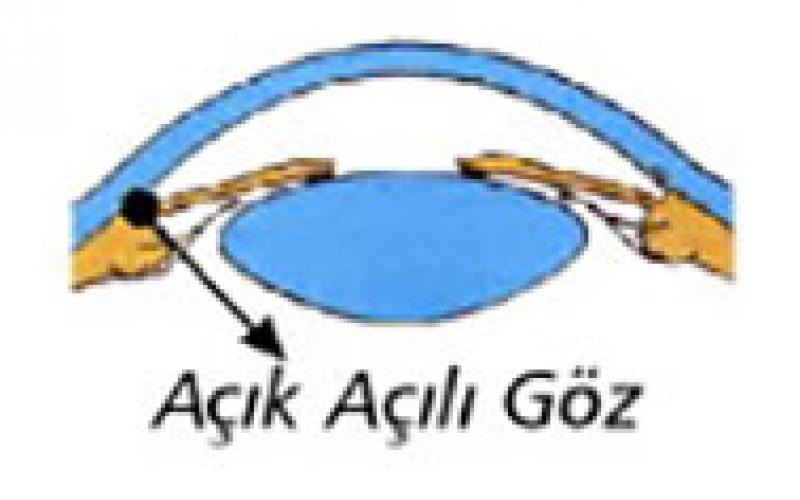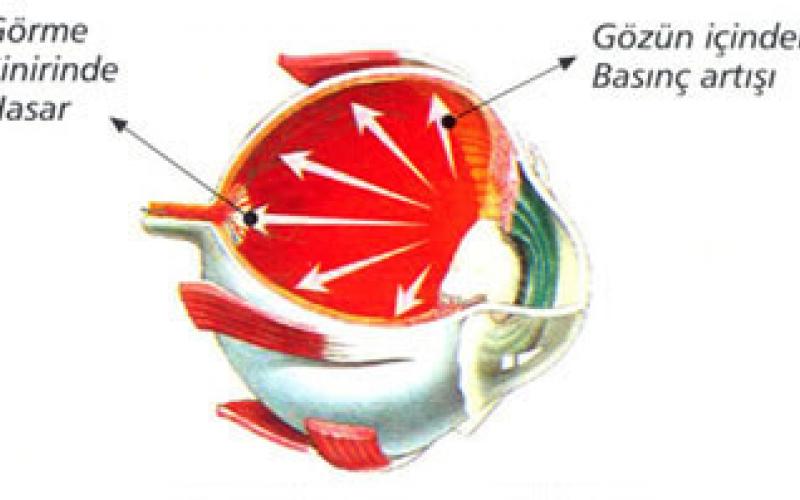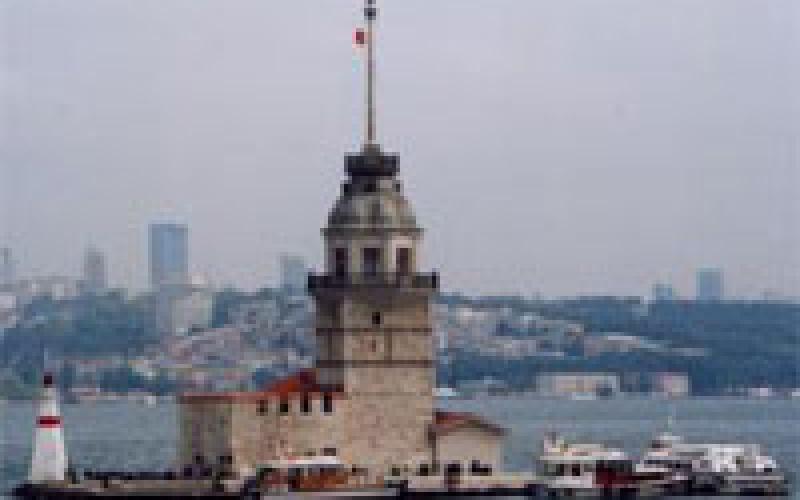Glaucoma (Eye Pressure)
Glaucoma is the silent thief of sight...
WHAT IS GLAUCOMA?
Glaucoma (eye pressure) is a disease that causes loss of vision due to the increase in intraocular pressure enough to destroy the visual nerve. In a normal eye, the eye fluid is continuously produced and evenly absorbed and discharged. Hence, intraocular pressure remains at normal levels. In general, eye pressure below 20–21 mm Hg is normal. However, even with lower blood pressure, glaucoma may occur. If the discharging of the produced eye fluid is prevented, intraocular pressure increases and Open Angle Eye Pressure (Glaucoma) occurs, which is the most common form of glaucoma. In this case, there is a congestion in the ducts that allow the eye fluid to reach the blood vessels, which normally should not occur, and the accumulated eye fluid increases the intraocular pressure. High intraocular pressure damages the eye nerve and, if left untreated, causes loss of vision leading to blindness.



WHO HAS THE GLAUCOMA? WHAT ARE THE SYMPTOMS?
It occurs in 2% over 40 years of age and 10% over 60 years of age. There are types of infancy (congenital glaucoma) and childhood. There is usually no symptom at the beginning and no visual impairment and pain. If the disease is not diagnosed early and progresses, blind spots occur in the visual field due to damage to the visual nerve. Then, as if looking through a pipe, the surrounding objects become invisible. In the rare closed-angle glaucoma, eye pressure reaches very high values, causing severe pain and blurred vision. This is usually observed in hyperopia patients.

Effect of Glaucoma in the Eye
WHAT ARE THE TREATMENT METHODS OF OPEN-ANGLE GLAUCOMA?
Drug Treatment: It is the most commonly used treatment method. However, there may be side effects of medications and sometimes eye pressure cannot be reduced. There is also a risk that the patient will not be able to use the drops regularly.
Laser Treatments: Argon Laser Trabeculoplasty (ALT) was a widely used laser treatment in the past. However, it caused permanent scar tissue in the eye. Selective Laser Trabeculoplasty (SLT) is a new, effective, harmless treatment, which can almost be applied nearly endlessly. (YAG (Yttrium Aluminum Garnet), which is another known laser procedure, is used for therapeutic purposes or to prevent the occurrence of the crisis in narrow angle glaucoma and glaucoma due to angle closure.)
Surgery: It is a treatment method which aims to decrease intraocular pressure by providing a new drainage pathway for the delivery of ocular fluid to blood vessels. It is a treatment method that exhausts the patient and has a risk of bleeding and infection. One of these methods is used primarily in treatment. If the desired result is not achieved, other treatment methods are used. The majority of glaucoma patients do not use their medication properly and mislead their physicians by using their medication properly a few days before they come to the physician for examination and by keeping their eye pressures at normal levels. As a result, the patient's glaucoma progresses and visual impairment occurs, leading to blindness.

Normal Eye

Eye with Glaucoma
FACTORS INCREASING THE RISK OF GLOCOMA (EYE PRESSURE)
- The presence of glaucoma in the family
- Long-term cortisone treatment
- Intraocular inflammation (Uveitis)
- Advanced age
- Diabetes
- High or low blood pressure
- High myopia or hyperopia
- Eye injuries
- Migraine
- Anemia
WHAT ARE THE AUXILIARY DIAGNOSIS AND EXAMINATION METHODS?
- Measurement of eye pressure (intraocular pressure),
- Examination of the anterior chamber angle of the eye,
- Examination of the visual nerve,
- Evaluation of visual nerve functions by methods such as visual field,
- Examination of visual nerve head and nerve fibers by various methods (NFA, RTA, OCT, HRT),
- Measurement of the thickness of the corneal layer of the eye.
ORA
Eye pressure measurement with ORA device
The ORA device (Ocular Response Analyzer) measures corneal biomechanics, sharp intraocular pressure (IOP) with a single device, allowing us to understand the true structure of the cornea.
The measurement results may vary due to reasons; in classical glaucoma examinations, the eye's blood pressure measurements are either dry or extremely watery, the patient squints his eyes and he expends effort before examination. It is known that corneal thickness and response time may also alter the results. In the studies performed, it has been found that some people considered in the normal class by eye pressure measurement have glaucoma in ORA measurements.
ORA is performed without contacting the eye and takes a total of several seconds. Besides, it is complementary to other tests in early detection of keratoconus.
THE IMPORTANCE OF EARLY DIAGNOSIS IN GLAUCOMA
Glaucoma cannot be completely eliminated with glaucoma treatment. Treatment can only stop the progression of the disease and damage to the visual nerve. Therefore, early diagnosis is important for less damage from the disease. Glaucoma treatment continues throughout life.
TREATMENT METHODS IN GLAUCOMA
The treatment methods of glaucoma vary based on the cause and degree of the disease.
- Drug Treatment: It is the first preferred method.
- Various laser treatments (ALT, SLT),
- Surgical methods (Glaucoma Surgery)
Early diagnosis is important because the damage to the visual nerve cannot be reversed.
HOW TO PERFORM SLT TREATMENT?
SLT treatment is performed in the examination room. It does not require any surgical condition. Hospitalization and restricting daily activities are not required. Before starting the treatment, the eye is anesthetized with an anesthetic drop. Then laser treatment is started using a special microscope. The procedure is completed in a few minutes and the patient does not feel any pain. After the procedure is completed, an anti-inflammatory eye drop is dropped to the patient's eye. Eye pressure drops significantly within 1-3 days. In the meantime, the patient should not delay the physician checks.

